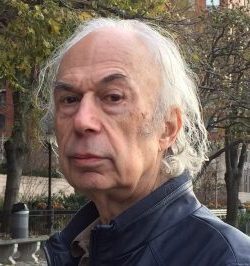A number of Christian commentators have recognized that there are several parallels between the story of Samson and the story of Jesus. In Christian circles, it is often argued that these similarities point to Jesus. Given the strength of several of the parallels, I think an argument could be made that the influence worked in the other direction, with the story of Jesus pointing to the story of Samson as a literary source.
The story of Samson can be found in Judges 13–16. Here is my list of parallels. See what you think. At the end of the listing, I’ll discuss another parallel that Christians overlook. Samson was almost certainly a deity figure.
Similarities between the Samson and Jesus stories
- Israel is under the domination of a foreign power. In Samson it is the Philistines. With Jesus it is the Romans.
- An angel appears to the hero’s mother-to-be and announces she will be the bearer of a child through a miraculous birth, apparently without benefit of sexual activity. In the Samson story, the mother is barren and unable to have children.
- The angel tells the mother that the child will be the savior of Israel.
- The spirit of the Lord is involved in the birth of the child.
- At some point, the spirit of the lord enters into the hero.
- The hero likes to speak in riddles.
- The hero has been given authority by God to act as a Judge over Israel.
- The Jews bind the hero and hand him over to the foreign power ruling over them. In the Samson story, he manages to escape but is re-arrested later.
- Someone close to Jesus is bribed in order to find a way to take him into custody.
- After the hero is arrested, his sight is impaired. In the Samson story he is blinded. In the Jesus story he is blindfolded.
- After the hero is arrested, he is mocked.
- The hero knows that he will die pursuant to God’s plan.
- Just before the hero dies, his arms were stretched out in a cross-like fashion.
- Upon his death a temple is damaged. In Samson’s story, he brings down the Philistine temple. In the Jesus story, the curtain in the Jewish Temple is torn in two.
While the details in each of the two narratives aren’t identical, they are similar and abundant. As to the Samson story, if it did serve as a literary source, it existed in a contextually different situation. It wouldn’t be surprising, therefore, to see modifications made to the literary template to fit in with the later context.
Samson as deity
The name Samson, Shimson in Hebrew, literally means “sun man” or man of the sun.” This is not the kind of name one would expect from an Israelite. It suggests that Samson originates as a solar deity for a non-Israelite cult. This is reinforced by the fact that he has extremely long hair, which serves as the basis of his strength. Long hair frequently has solar implications in mythology as a symbol of the sun’s rays. Horses and Lions, having long manes, are frequently depicted as solar symbols. The Samson story also takes place close to the city of Beth Shemesh, which translates as House of the Sun.
In the story, Samson is identified with the tribe of Dan, which is located on the Mediterranean coast, in Philistine territory. Shortly after the Samson story, Judges tells the story of the Danites moving to the north of Israel, and in later times Dan was considered the northern boundary of Israel.
In the Song of Deborah, she asks “Dan, why did he abide with the ships?” Dan didn’t aid Israel in this particular battle, and Dan appears as a seafaring nation. Some scholars believe that the tribe of Dan may have been the Dnyn, one of the Greek Sea People tribes that entered Canaan at about the time of the Judges setting. Homer used the name Danoi for the Greek nations that fought at Troy.
The Philistines were another one of the Sea Peoples that entered Canaan during the Judges era. In the Samson story, despite being an Israelite and a Judge, Samson seems to spend all of his time with the Philistines, marrying a Philistine woman and socializing with the Philistines and taking up with various Philistine women..
Many scholars recognize at least a similarity between Samson and the Greek hero Herakles, who became a deity upon his death. Portions of the Herakles cycle, such as his sailing through the sky in a golden cup, suggest that he had aspects of a solar deity. In my 101 Myths of the Bible, I explore the connection between Samson and Herakles in more detail. I suggested that the Sea Peoples brought the Herakles myths with them into Canaan and they became the basis of a local solar cult with “sun man, ” i.e., Samson, as the local deity.
